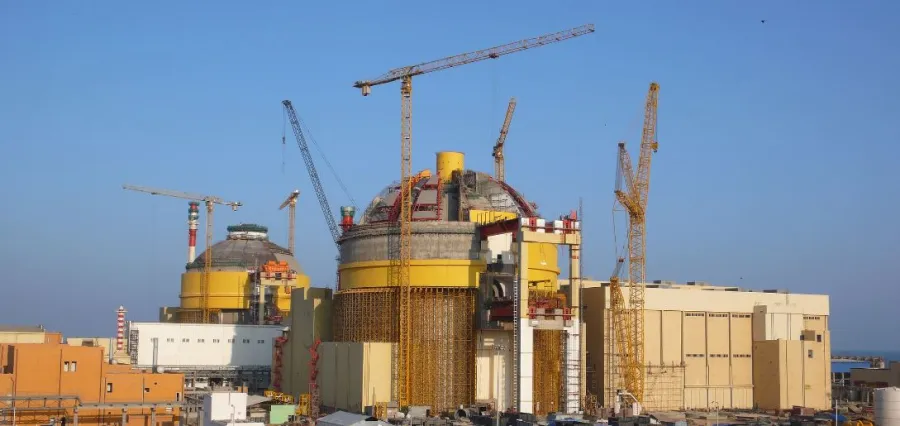
Private nuclear power players suffer bottlenecks in Indian sector: analysis
Participation is heavily challenged by a "weak management" of contracts.
India has an ambitious nuclear energy programme but its legislative-regulatory mechanism does not quite match up to it. Niharika Tagotra from the Institute for Peace and Conflict Studies, said in an analysis that with a present installed capacity of 5780 mega watts (MW), contributing about 3 per cent to the total energy production, nuclear power in India is produced primarily by its Pressurised Heavy Water Reactors (PHWRs) that operate at a Plant Load Factor (PLF) of 50 to 60 per cent given the shortage of uranium fuel supply.
India aims to produce anywhere between 45,010 MW (optimistic scenario) to 78,060 MW (highly optimistic scenario) of nuclear energy by the year 2047 as per the Indian Energy Security Scenario (IESS).
In sum, by 2047, India will need to develop and commission around 55 new nuclear power plants in order to be able to substantially increase the share of the percentage of nuclear power generated. The energy scenario however faces innumerable bottlenecks including a laggard energy bureaucracy as well as a series of legislations pieced together in an incoherent manner.
Here's more from the analysis:
In order to increase the pool of finance for its nuclear power projects and lessen the duration required for construction of nuclear power plants, the government will also need to look at increasing the participation of private players and regularise the flow of investments to the cash- crunched nuclear energy sector. Currently, India sees a very low participation by the private sector in its nuclear energy industry. The participation from the private industries has been limited to the supply of components, equipment, and works contracts, partaking in the sector only as junior equity partners. Companies like BHEL, L&T and WIL have been awarded contracts for the manufacture of steam generators and reactor equipment but their participation is plagued with policy delays and other regulatory and bureaucratic issues.
The process of private participation is also hampered by a weak management of contracts by the Nuclear Power Corporation of India Limited (NPCIL). The company uses the L1 method for awarding of contracts. Under the L1 or the ‘lowest bidder’ tender system, the contract is awarded to the bidder who provides a product that meets all the mandatory requirements specified under the Services Qualitative Requirement (SQR) at the least net cost. This, however, comes with its own set of challenges, whereby the tender system fails to take into account the ‘cost-plus’ phenomenon. Bids that are too low to be implemented affect the quality of the products delivered, and lead to contract termination or delays due to litigation.
View the full analysis here.








![Cross Domain [Manu + SBR + ABF + ABR + FMCG + HBR + ]](https://cmg-qa.s3.ap-southeast-1.amazonaws.com/s3fs-public/styles/exclusive_featured_article/public/2025-01/earth-3537401_1920_4.jpg.webp?itok=WaRpTJwE)
![Cross Domain [SBR + ABR]](https://cmg-qa.s3.ap-southeast-1.amazonaws.com/s3fs-public/styles/exclusive_featured_article/public/2025-01/pexels-jahoo-867092-2_1.jpg.webp?itok=o7MUL1oO)









 Advertise
Advertise


